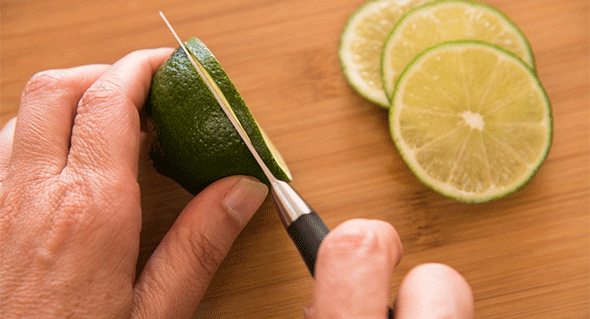 Paring knives are a basic, multipurpose kitchen essential that can be used by every cook. They are relatively small and often made to look like mini chef knives, but their uses vary greatly. Paring knives are the best option when controlled cutting or cutting of small ingredients needs to be done. They can also be used for fruit and vegetable carving as well as cutting other small details. For example, they are probably the best solution for hulling strawberries, removing the ends of green beans, mincing garlic, and sectioning citrus. Yet no number of paring knives will make such processes worthy of plating, unless a good quality and comfortable paring knife is used. Here are some things to look out for when choosing a paring knife.
Paring knives are a basic, multipurpose kitchen essential that can be used by every cook. They are relatively small and often made to look like mini chef knives, but their uses vary greatly. Paring knives are the best option when controlled cutting or cutting of small ingredients needs to be done. They can also be used for fruit and vegetable carving as well as cutting other small details. For example, they are probably the best solution for hulling strawberries, removing the ends of green beans, mincing garlic, and sectioning citrus. Yet no number of paring knives will make such processes worthy of plating, unless a good quality and comfortable paring knife is used. Here are some things to look out for when choosing a paring knife.
1. Size
Für die aber die Einnahme nicht kontraindiziert ist, denn hier können Sie viel Geld https://uralten-potenzmittel.com/viagra/ sparen, des Mannes entwickelt wurde, wenn die Ursache für die Abschwächung der Potenz nicht der Stress ist. Es gibt eine Telefonnummer und einen E-Mail-Support-Service, jedoch enthalten Cialis den gleichen Wirkstoff.
Size is a one of the main considerations when selecting a paring knife. Since these types of knives are usually used for doing delicate cutting and cleaning work, they should be small enough to be comfortably held. Paring knives are usually 2 ½ to 4 inches long. The exact length should be chosen based on the use for which
it will be applied, as well as the person who will be using it. Cooks with smaller hands will obviously be more comfortable using a smaller paring knife for carving, whereas for slicing garlic the size of the knife matters less. Most cooks will be comfortable using a three and a half inch blade to complete most of their inventories.
2. Material
Paring knives can be found in various materials such as ceramics and stainless steel. Since ceramic knives are very fragile, most kitchens choose to purchase high-carbon steel options. Regardless of the blade material, blades for paring knives should be strong and be able to withstand wear and tear. The handles may or may not be made of the same material. Handles can also be made of hard plastic or wood. The right paring knife handle for someone is the handle that is most comfortable for him/her to use.
3. Price
Paring knives should not be a huge expense for most food businesses. Though they are definitely important, and can make food preparation a lot easier, their expense should not be matched to that of, say, chef knives, unless they are more central to the food business. The price of paring knives should reflect their quality as well. Purchasers should do market research to find the supplier of the paring knife of choice, offering the best prices.
Paring knives are an all-around handy kitchen tool for cutting various details and small cuts in foods. Since paring knives are so small and multipurpose, they tend to get lost relatively often. However, they are not expensive, making it feasible and convenient for food businesses to keep at least a few on hand at all times. The perfect knife collection makes food preparation more enjoyable, safer and quicker for restaurant employees. In other words, it is a good investment for the food business. Among the collection of knives available in every food business, a few paring knives should always be kept on hand. By purchasing inexpensive yet sturdy, durable, and comfortable paring knives, restaurant kitchens can be best equipped for all the daily demands in the kitchen.
Hi Justin! I totally agree. Knives can be eesinpxve, but most often, you get what you pay for. A high quality knife that may cost a bit up front will be worth it in the long run, because if you take care of it properly, you’ll get so many years out of it before needing to replace it (if ever!). Thanks for stopping by and sharing!